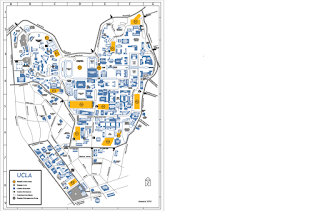Week 8 : Nanotech and Art
This week's lecture and reading gave me a broad perspective on the impact of nanotechnology and taught me how a variety of applications can have a significant effect on people's way of life. Moreover, it was a significant shock to me to learn how traditional scientific principles are not applicable to the nanoscale. As Gimzewski and Vesna have mentioned in their book, understanding the technologies requires a change of perception, since the laws of physics start to change at the nano-level. Richard Feynman explained this idea in detail by showing how the movement of objects with nanoscale units can be used to create new effects.
As a major in electrical engineering, I know a bit about nanotechnology because I learn about semiconductors. The medical device that applied the nanotechnology shown in this week’s lecture has attracted much interest to me. As Gimzewski said the idea of Nanomedicine, the development of nanotechnology has been accompanied by new discoveries in the medical field. it is a Nano-carrier that is made to remove cancer cells. Current research suggests the potential for medical advancement by creating nanoparticles that can not only treat tumors but also have access to and diagnose parts of the body, such as the brain, that were previously considered impossible.
Furthermore, the scientific principles of nanotechnology are applied to understand the forms of art found in nature. Gimzewski mentioned that the way to learn about self-organized and self-assembled nanoparticles helps the scientists to figure out how atoms are composed of complex patterns found in nature like butterfly wings and snowflakes.
Nanotechnology has helped to improve in various areas. I hope that the relationship between nanotechnology and art will continue to improve in order to not only better understand nature better than in the past, but also create art with new forms and possibilities.
Reference
1 - Gimzewski, Jim, and Victoria Vesna. "The Nanomeme Syndrome: Blurring of Fact & Fiction in the Construction of a New Science." The Nanomeme Syndrome: Blurring of Fact & Fiction in the Construction of a New Science. UCLA, n.d. Accessed on 23 May 2018. <http://vv.arts.ucla.edu/publications/publications/0203/JV_nano/JV_nano_artF5VG.htm>.
2 - "Art in the Age of Nanotechnology." John Curtin Gallery. The Art.Base, 11 Mar. 2010. Accessed on 23 May 2018.
<https://art.base.co/event/2104-art-in-the-age-of-nanotechnology>
3 - UC Online Program. “Nanotech Jim pt1.” Online video clip. YouTube. YouTube, 21 May 2012. Accessed on 23 May 2018.
< https://www.youtube.com/watch?time_continue=10&v=q7jM6-iqzzE>
4 - UC Online Program. “Nanotech Jim pt4.” Online video clip. YouTube. YouTube, 21 May 2012. Accessed on 23 May 2018.
< https://www.youtube.com/watch?time_continue=1&v=yHCuZetAIhk>
5 - UC Online Program. “Nanotech Jim pt5.” Online video clip. YouTube. YouTube, 21 May 2012. Accessed on 23 May 2018.
< https://www.youtube.com/watch?v=4OWc8nmHJmY>
Imagine
Figure 1 -Zhu. Guizhi, “Nanomedicine” THE SCIENTIST, August 1, 2014
<https://www.the-scientist.com/?articles.view/articleNo/40598/title/Nanomedicine/>
Figure 2 -LISA M. KRIEGER, “Meet the Caltech professor who’s building a bigger snowflake”, The Meccury News, December 25, 2017
<https://www.mercurynews.com/2017/12/25/meet-the-caltech-professor-whos-building-a-bigger-snowflake/>
Figure 3 -Gimzewski, Jim, and Victoria Vesna. "The Nanomeme Syndrome: Blurring of Fact & Fiction in the Construction of a New Science." The Nanomeme Syndrome: Blurring of Fact & Fiction in the Construction of a New Science. UCLA, n.d. Accessed on 23 May 2018.
<http://vv.arts.ucla.edu/publications/publications/0203/JV_nano/JV_nano_artF5VG.htm>.
<http://vv.arts.ucla.edu/publications/publications/0203/JV_nano/JV_nano_artF5VG.htm>.





댓글
댓글 쓰기